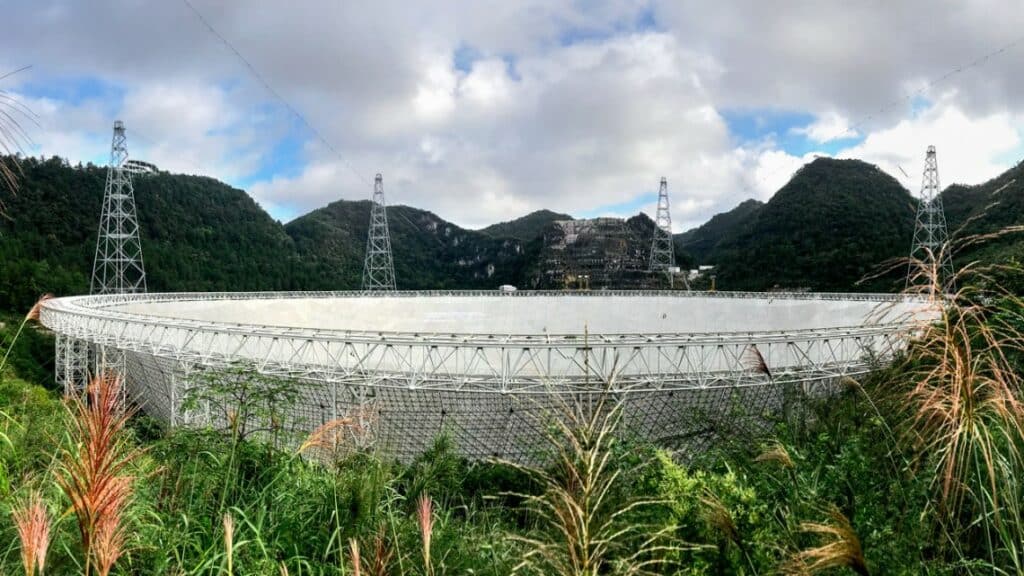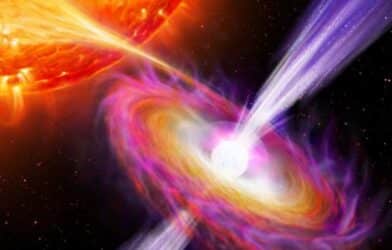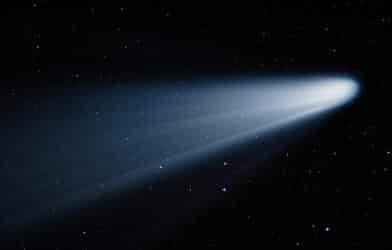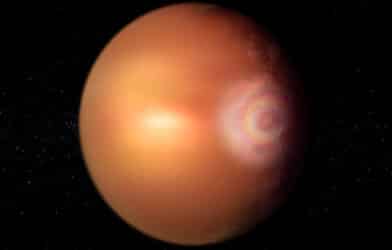It’s getting hot in here — for astronomers. Thanks to a rare and constant rapid-fire fast radio burst source billions of light years away, a team of international astronomers from Cornell and China are learning the secrets of the 1-million-degree hot space between the galaxies.
The repeating fast radio bursts (FRBs) are sending out a cosmic ping from more than 3.5 billion light years away. These bursts provide a gateway for scientists to grasp the “perplexing, mysterious, and million-degree intergalactic medium.”
“Examining the intergalactic medium is really hard,” says Dr. Shami Chatterjee, study co-author and principal research scientist in astronomy in the College of Arts and Sciences, in a statement. “The intergalactic medium is difficult to probe, which is why fast radio bursts are exciting. The bursts let us study the properties of the intergalactic medium.”
Fast Radio Burst 20190520B was first observed in June 2019 by the 500-meter Aperture Spherical radio Telescope (FAST) in Ghizou province, southwest China. To find the burst’s location, scientists turned to the Very Large Array, in Socorro, New Mexico.
Astronomers detected four bursts during the initial 24-second scan in 2019. During follow-up observations between April and September 2020, FAST detected 75.
Because of the rapidly repeating bursts, astronomers believe FRB 20190520B is quite young.
“It seems to reside in a complex plasma environment, like that expected in a young supernova remnant,” explains Chatterjee. “So one possibility is that the highly active source may be a newborn, and if so, it paints an intriguing evolutionary picture of FRB sources, where young burst sources are associated with persistent radio emission.
“The persistent emission fades away as the burst repetition rate slows down. This is still very much a hypothesis and we are eager to test it with further examples of repeating FRBs,” Chatterjee continues.
It was initially thought that FRBs pass through only a modest amount of gas in their host galaxies, which makes it an easier task to count electrons in the intergalactic medium. However, FRB 20190520B encounters far more gas in its host galaxy than scientists expected.
“We want to deconstruct how many free electrons are in the intergalactic medium, because it has been extremely difficult to study,” says Stella Ocker, a doctoral student in astronomy. “We don’t know much about it.”
Ocker added this particular FRB “behaves in extreme, surprising ways.”
“The surrounding environment is extraordinarily complex and dynamic, which offering us critical clues to FRBs’ mysterious origins. FRB 20190520B emphasizes the importance of identifying and characterizing the host galaxies of FRBs before we can use them as probes of the intergalactic medium.”
The study is published in the Astrophysical Journal and funding for the research was provided by the National Science Foundation.










-392x250.png)

